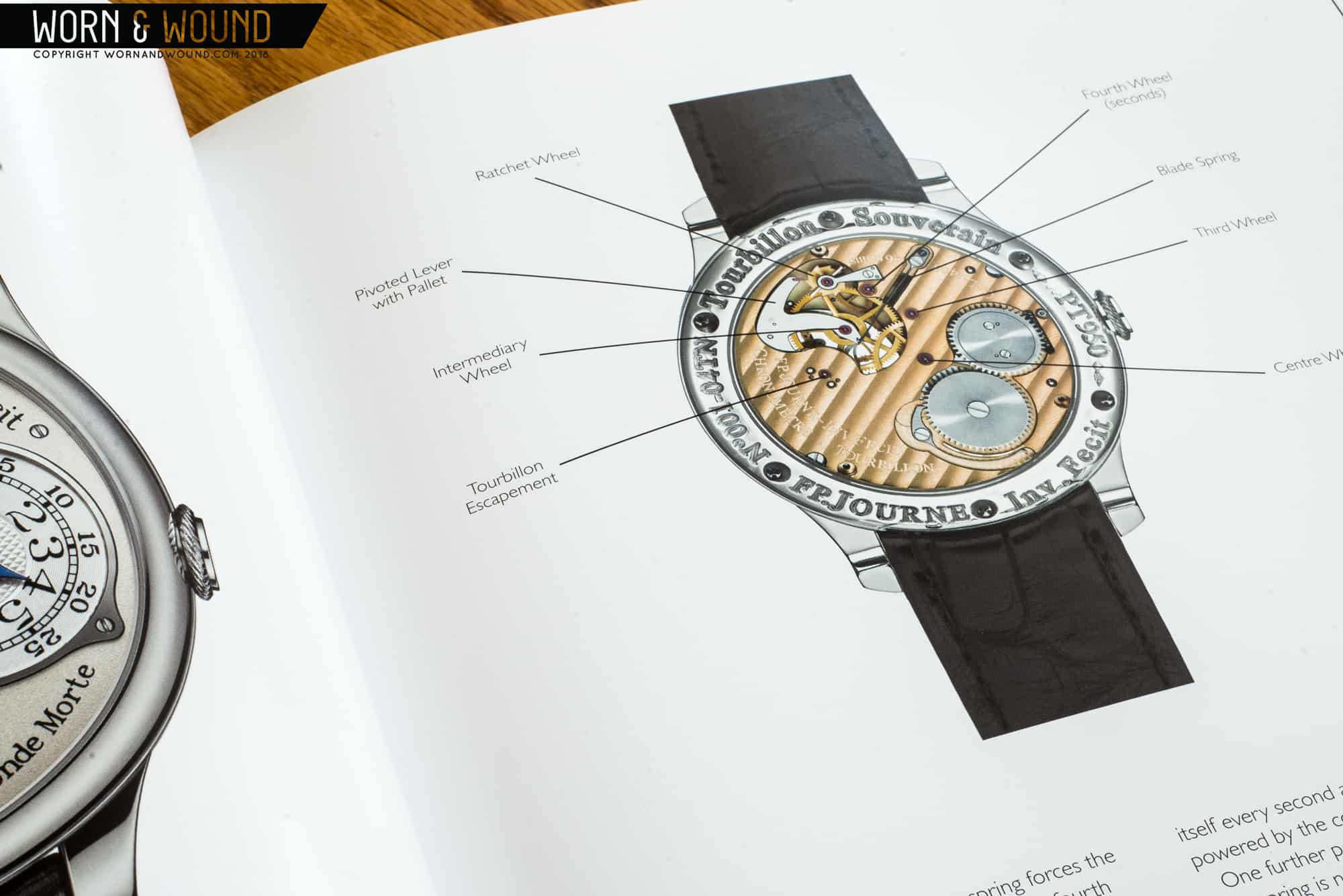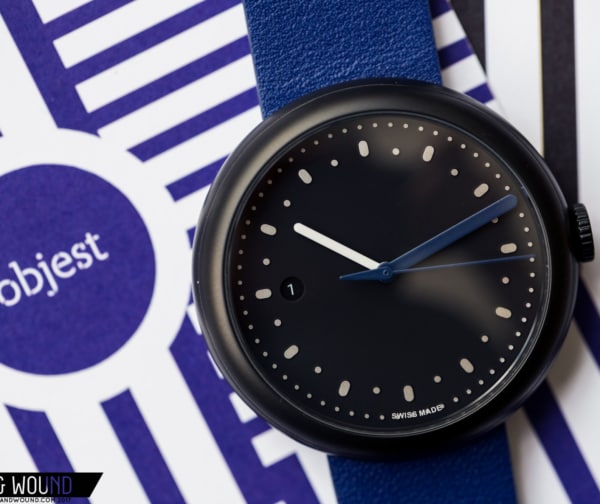The Wristwatch Handbook is an in-depth study of mechanical movements aimed at collectors looking to become informed connoisseurs. As John Reardon, International Head of Watches at Christie’s, writes in his forward, “If you own more than one watch, or aspire to own more than one watch, you have the spirit of a collector and need this book as a resource.” Reardon also contextualizes The Wristwatch Handbook as meeting the needs of a collecting sector that began to emerge only 30 years ago. This sector’s newness, along with the unfathomably steep price hikes of collectable watches in the past few years, may account for why a comprehensive book for collectors like The Wristwatch Handbook showed up in 2016. Such a book does seem due, if not quite overdue.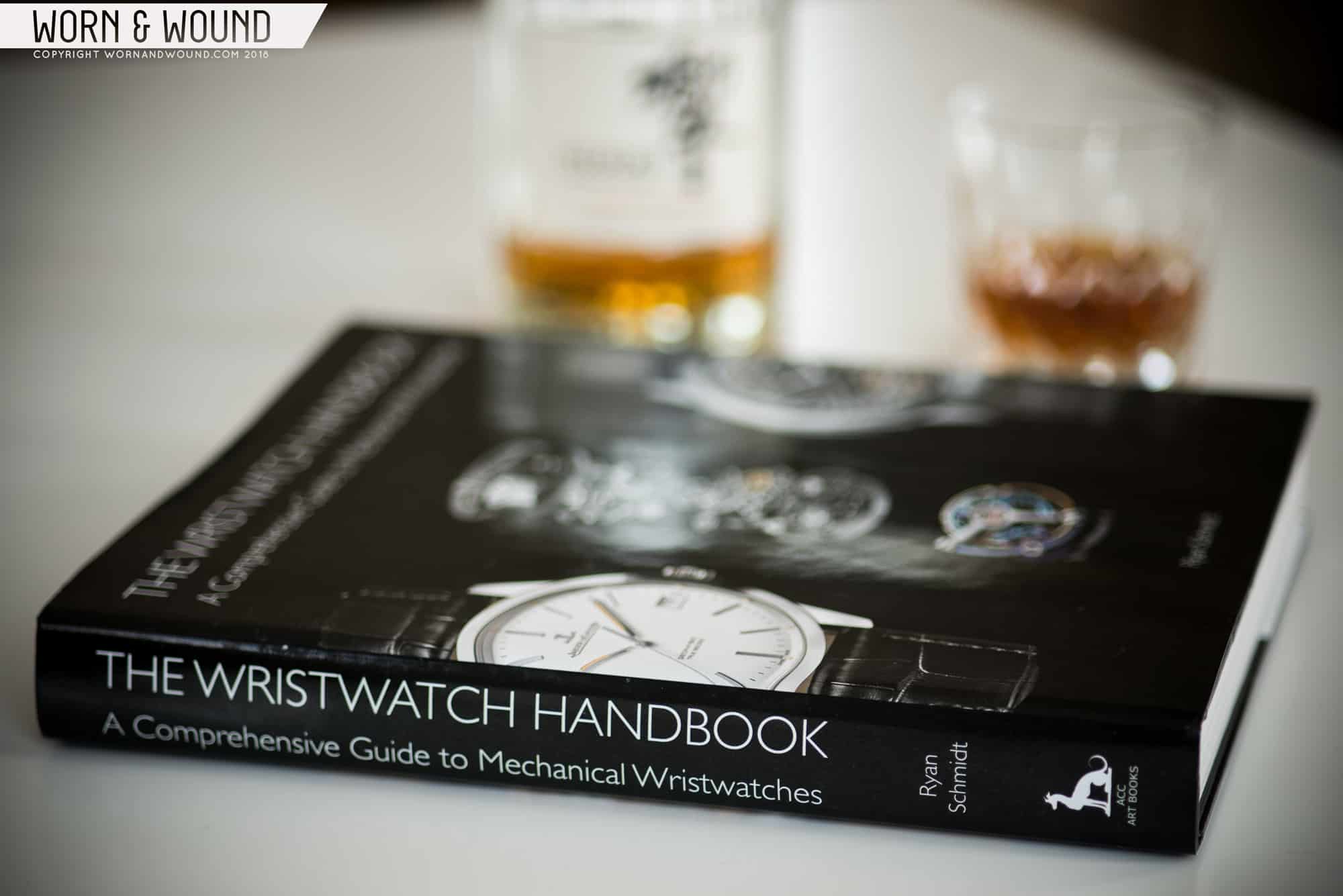 With brands like F. P. Journe, Richard Mille, Girard-Perregaux, and their ilk featured throughout, The Wristwatch Handbook appears to lean toward the high-end collector. As a member of Christie’s corporate team, author Ryan Schmidt inhabits an elevated milieu, but it’s also true that many of the elaborate complications that an extensive overview must cover are only found in these expensive timepieces. In other words, Seiko doesn’t offer, say, a celestial chart, but Patek Phillipe does. Noting his curatorial role, Schmidt explains that, “[T]his book is brand agnostic, using over 300 illustrations from more than 90 brands. It doesn’t matter what price it retails for, what logo it has on the dial, or what holding company owns the logo; if it does a great job of illustrating a given concept, it gets the attention it deserves.” Fair enough, and nothing in this book precludes readers seeking an in-depth exploration of mechanical movements for its own sake. The fancy watches are merely the vehicle for that exploration.
With brands like F. P. Journe, Richard Mille, Girard-Perregaux, and their ilk featured throughout, The Wristwatch Handbook appears to lean toward the high-end collector. As a member of Christie’s corporate team, author Ryan Schmidt inhabits an elevated milieu, but it’s also true that many of the elaborate complications that an extensive overview must cover are only found in these expensive timepieces. In other words, Seiko doesn’t offer, say, a celestial chart, but Patek Phillipe does. Noting his curatorial role, Schmidt explains that, “[T]his book is brand agnostic, using over 300 illustrations from more than 90 brands. It doesn’t matter what price it retails for, what logo it has on the dial, or what holding company owns the logo; if it does a great job of illustrating a given concept, it gets the attention it deserves.” Fair enough, and nothing in this book precludes readers seeking an in-depth exploration of mechanical movements for its own sake. The fancy watches are merely the vehicle for that exploration.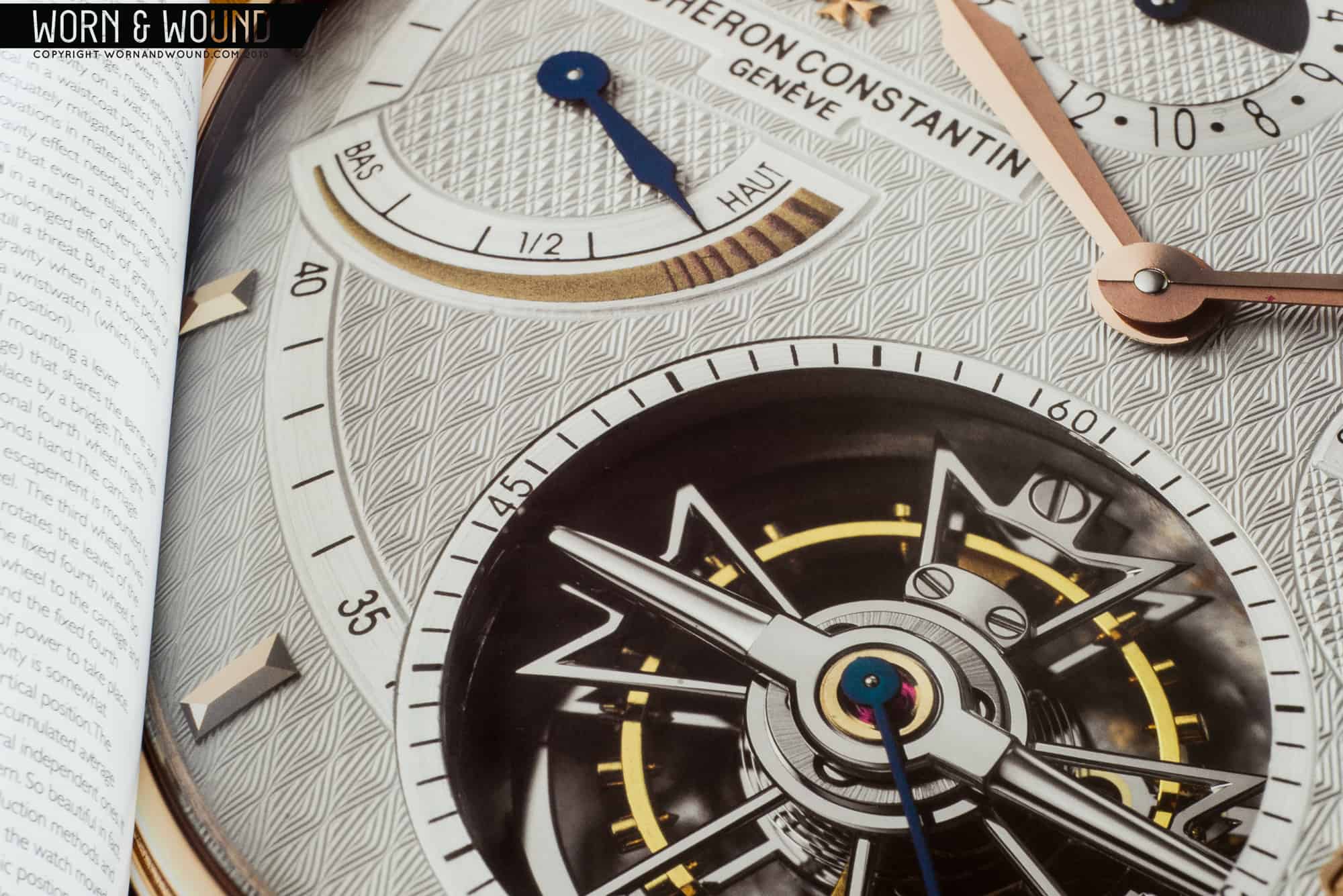
Book Review: The Wristwatch Handbook—A Comprehensive Guide to Mechanical Watches
The other notable inclination of this book is toward skeletonized watches. When the goal is to look under the hood, removing major parts of that hood is helpful. It’s interesting to see so many skeletonized watches in one place, and doing so has me discerning what I do and don’t like about various skeletonizing strategizes. I previously found skeletonizing a bit goofy, but there is nothing goofy about the see-thru Omega DeVille Central Tourbillon Co-Axial Chronometer or the Speake-Marin Magister Vertical Double Tourbillon—both are gorgeous, and both exemplify fascinating movements.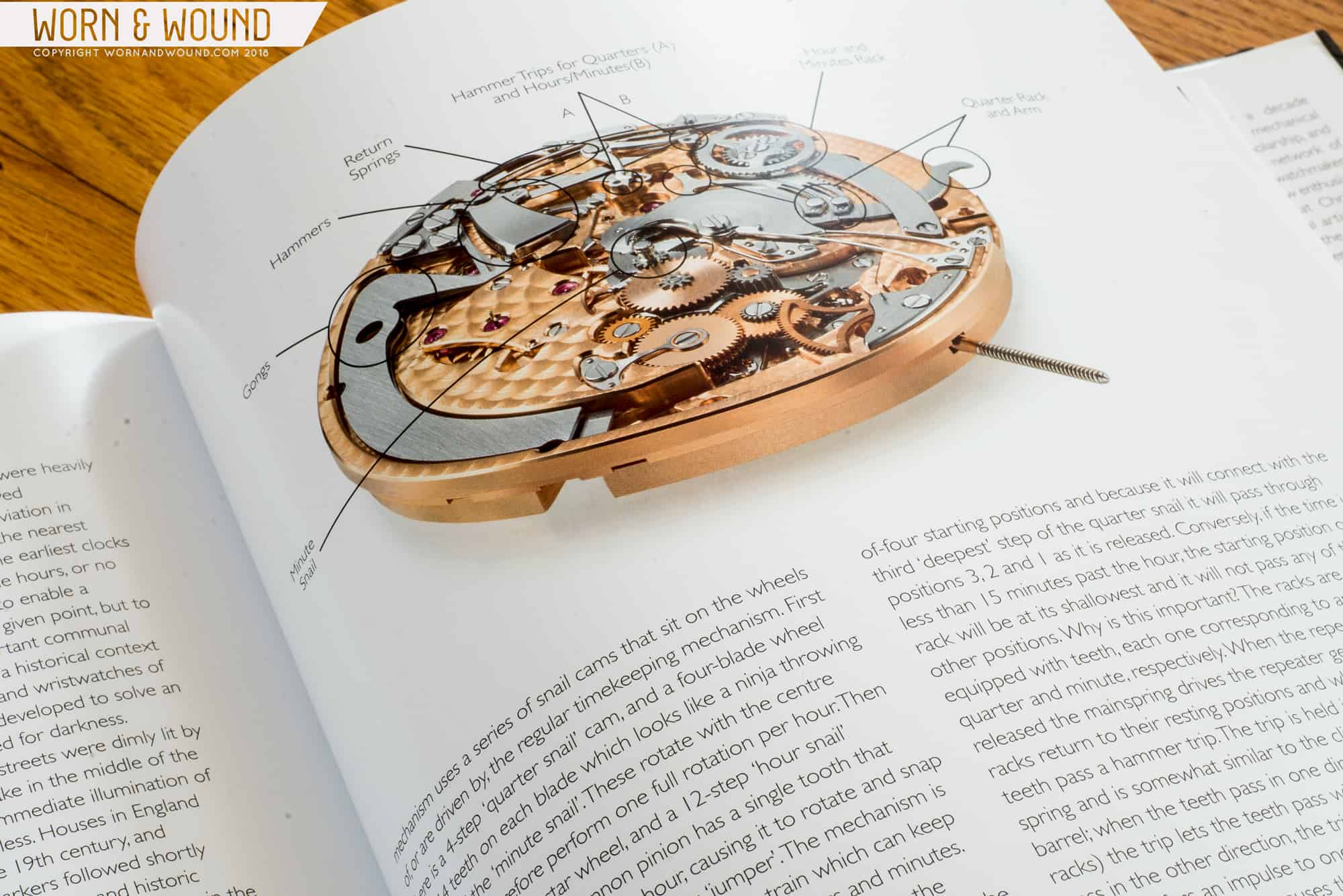
The Wristwatch Handbook is in equal parts a technical textbook, a beautiful art book, and a playful meditation on watch collecting. By combining these attributes, this book serves as an intelligent, plush, and often fun exposition on a topic that tends toward the tedious. Schmidt is a natural writer, his voice refreshingly casual and to the point as he moves through technical explanations with an easy grace. Part of his strategy is to anthropomorphize the movements, which is both endearing and helpful. Here’s an example:
All of these component parts: the wheels, pinions, springs, and levers—are sandwiched together between a main plate and a series of bridges. The main plate has a ‘dial side’ and a ‘bridge side’ (or movement side). The dial side of a basic movement is fairly featureless…[while] [t]he bridge side is where the party takes pace, where the components come together and where the balance wheel often clears the dance floor. It is this view of the movement that is so captivating and convinces us that there is something of a soul somewhere in there.
Or, after his quick summary of the baffling inconsistencies between the Julien, Gregorian and Astronomical calendars, Schmidt drops this wonderful assignment of intelligence and mental fatigue to a perpetual calendar movement:
Back to watches. A perpetual calendar is smart enough to know when a month is just 30 days long, and when it is a regular leap year, but it needs a nudge on the first year of three out of every four centuries. Therefore on the morning after 28 February 2100 the date will skip to 1 March, and so on until 2400 when there is a well-deserved century off.
That’s right: the movement will have earned a vacation.
In an attempt to make a constant-force jumping display accessible, he ends a nearly impenetrable sentence with an unexpected assignment of consciousness to the balance wheel that, amazingly, clarifies everything:
In order for the balance wheel to remain isochronous the transmission features two spring-loaded constant force wheels, each one loaded by the rotation of its respective set of planetary gears, their constant force enables the balance wheel to oscillate with no sense of the acrobats going on further upstream.
That’s just great writing.
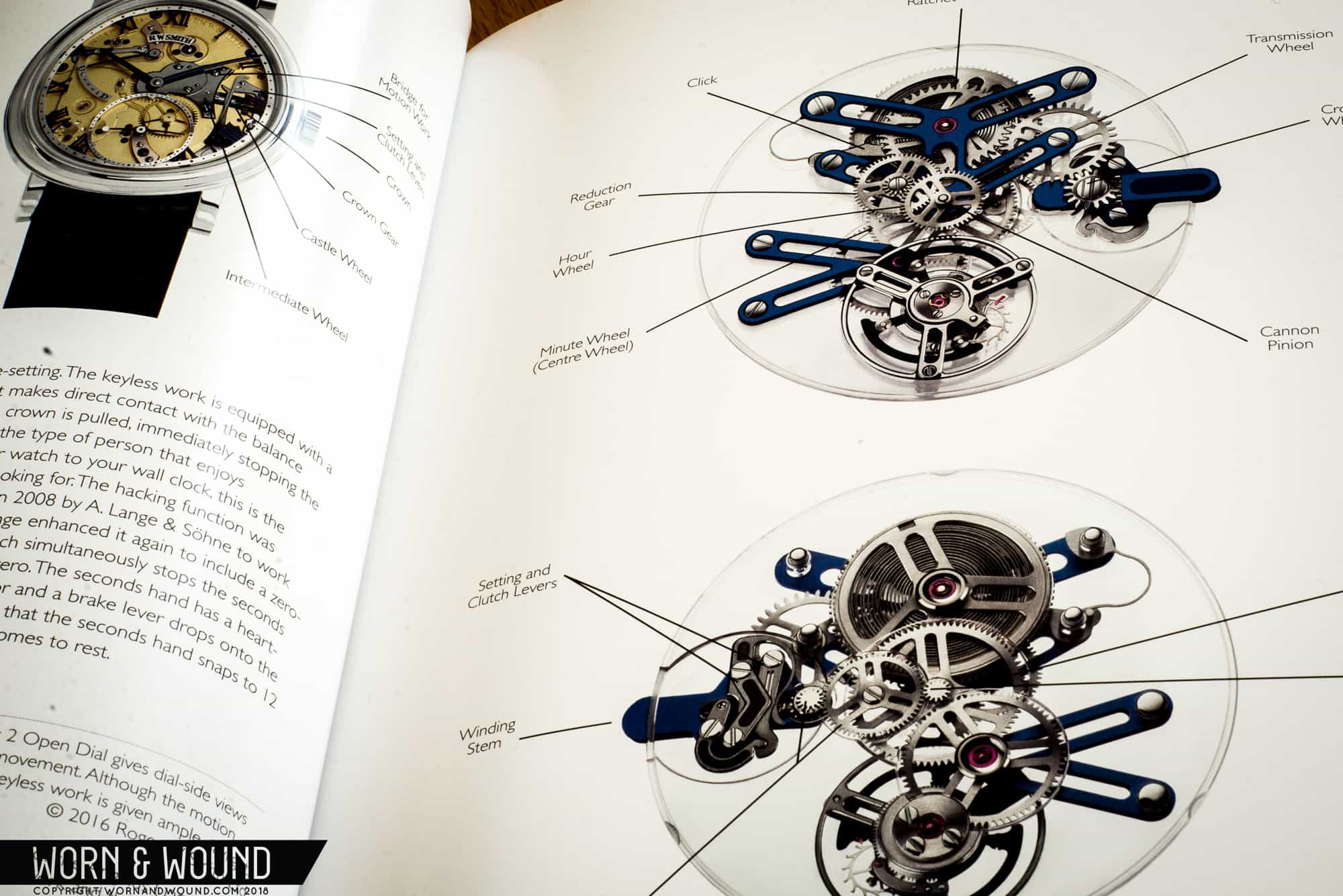 This last passage raises an interesting question: How effective is this book’s combination of text, photos and diagrams at communicating something as complex as a multi-complication watch movement? The answer depends to some degree on your personal learning style. I’m relatively mechanically inclined, but I still find it difficult to mentally “piece together” an exploded gear train from an image, for example, or to follow elaborate sentences about elaborate mechanisms. If you’re at all like me, you may find yourself re-reading passages and staring at images until a concept becomes clear. That’s pretty normal for technical stuff, and my bringing it up is not a critique of The Wristwatch Handbook as much as it is an appreciation of the complexity of its topic. With all that said, The Wristwatch Handbook is about as clear as a technical book aimed at connoisseurs (and decidedly non-watchmakers) can be. I’m also grateful to have all this info available in one place and sans internet.
This last passage raises an interesting question: How effective is this book’s combination of text, photos and diagrams at communicating something as complex as a multi-complication watch movement? The answer depends to some degree on your personal learning style. I’m relatively mechanically inclined, but I still find it difficult to mentally “piece together” an exploded gear train from an image, for example, or to follow elaborate sentences about elaborate mechanisms. If you’re at all like me, you may find yourself re-reading passages and staring at images until a concept becomes clear. That’s pretty normal for technical stuff, and my bringing it up is not a critique of The Wristwatch Handbook as much as it is an appreciation of the complexity of its topic. With all that said, The Wristwatch Handbook is about as clear as a technical book aimed at connoisseurs (and decidedly non-watchmakers) can be. I’m also grateful to have all this info available in one place and sans internet.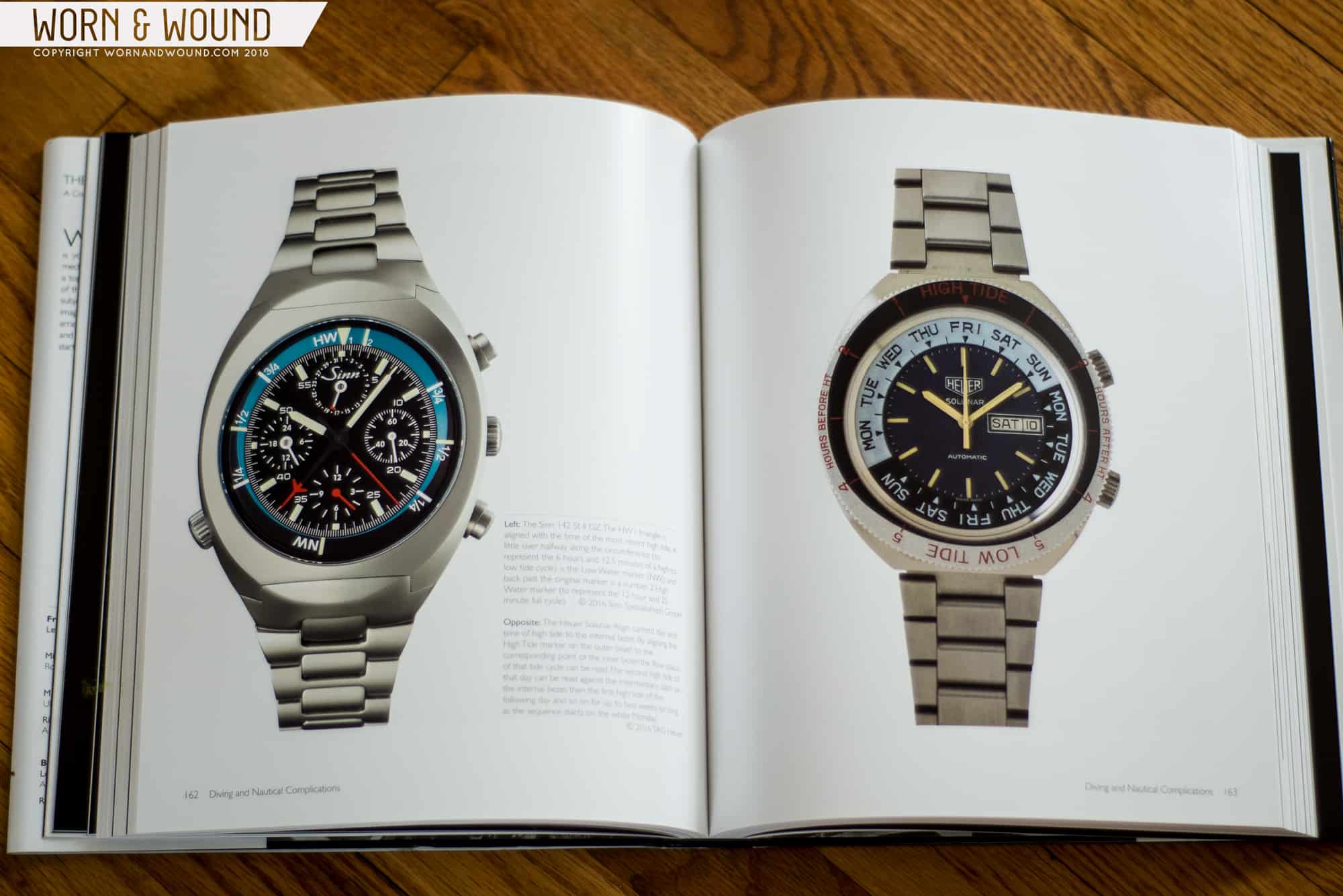 The book’s design is splendid, and it helps page-turning move at a satisfying clip. Minimal text is used on any given page, leaving loads of white space around the impeccable photos and illustrations. Pages are glossy, heavy-weight stock; fonts are light sans-serif in gray, putting further emphasis on the images. The brain needs this visual space to process the dense mechanical explanations, and the designers seem to have also understood that half the appeal of watch collecting is just staring at the things. And stare I do, sometimes without reading a single word. It’s a fantastic picture book.
The book’s design is splendid, and it helps page-turning move at a satisfying clip. Minimal text is used on any given page, leaving loads of white space around the impeccable photos and illustrations. Pages are glossy, heavy-weight stock; fonts are light sans-serif in gray, putting further emphasis on the images. The brain needs this visual space to process the dense mechanical explanations, and the designers seem to have also understood that half the appeal of watch collecting is just staring at the things. And stare I do, sometimes without reading a single word. It’s a fantastic picture book.
Herein lies the genius of The Wristwatch Handbook: it presents some of the world’s most complicated mechanisms without overwhelming a layperson more than necessary. In that regard, The Wristwatch Handbook is a very welcome addition to the wristwatch literature, both as an engaging read for its own sake and as a serious reference for collectors of all kinds. Even at $85 I think this book is a must-have. Considering the bountiful expertise that so obviously went into producing it, it actually seems a bargain. The Wristwatch Handbook
Photography by Allen Farmelo









 Featured Videos
Featured Videos




